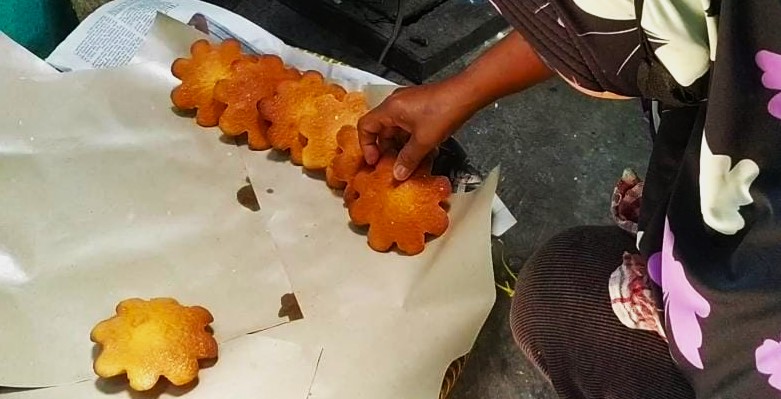The Perfect Sweetness of Roti Kembang Waru: A Flavorful Tradition from Kotagede, Yogyakarta
The appeal of Kotagede lies not only in the history of the heritage area, silver, and batik. This old city also has legendary “Roti” that are still produced today. namely "Roti Kembang Waru". This "Roti", known since the Dutch era, combines a series of sweet conditions of Kotagede in the past and present in a piece of savory and sweet Javanese bread.
Among the rows of houses in the maze of Kotagede, the aroma of Roti Kembang Waru dough wafts from Ibu Galih's house every morning. A home business that not only maintains the deliciousness but also preserves the culinary tradition that has existed since ancient times. Ibu Galih, a dedicated housewife, is behind the making of the famous Kue Kembang Waru in the area. With the skills passed down from her parents, Bu Galih has made Roti Kembang Waru more than just a cake. She preserves the culinary cultural heritage of Yogyakarta, which has existed for centuries.
When Sabato Kaliwuan invited travelers to visit that morning, Ibu Galih had just come home from the market to buy eggs and flour. Her bicycle was a witness to the strength of the legs and hands of the woman who was more than half a century old, preserving the culinary heritage of her ancestors. Her hands deftly arranged all the ingredients and then prepared a large bowl to knead the Roti Kembang Waru dough. Namely flour, eggs, white sugar, vanilla, and butter. Meanwhile, her husband prepared the coals from the burning charcoal to cook this Roti.
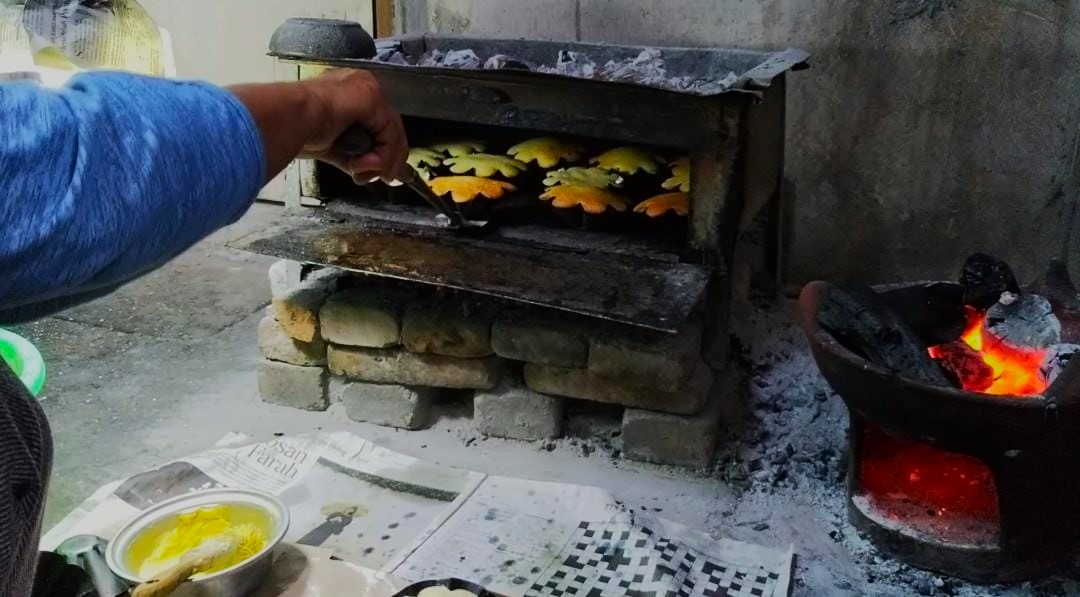
When the coals are big enough to light, a medium-sized oven is immediately placed on the stove. The top of the oven is also given charcoal that spreads the heat evenly. Then, dozens of aluminum molds shaped like hibiscus leaves are smeared with butter and prepared on a tray. When the dough is ready, the molds are filled with dough, then put in the oven alternately.
The savory and sweet aroma wafts out, and the dough looks half-cooked. Ibu Galih skillfully rotates the mold so that the level of cake maturity is perfect and even. A tool like a metal spatula, the handle of which is wrapped in cloth so that it does not feel hot, really helps Ibu. Galih moved the mold position in the oven pan. After about 20 minutes, the dough rises and turns brown, which is a sign that Roti is perfectly cooked. The mold is immediately removed, then the top of Roti is smeared with butter and removed from the mold. Hummm….. Yummy and the Tummy, this Roti is very delicious to enjoy when it is fresh from the oven.
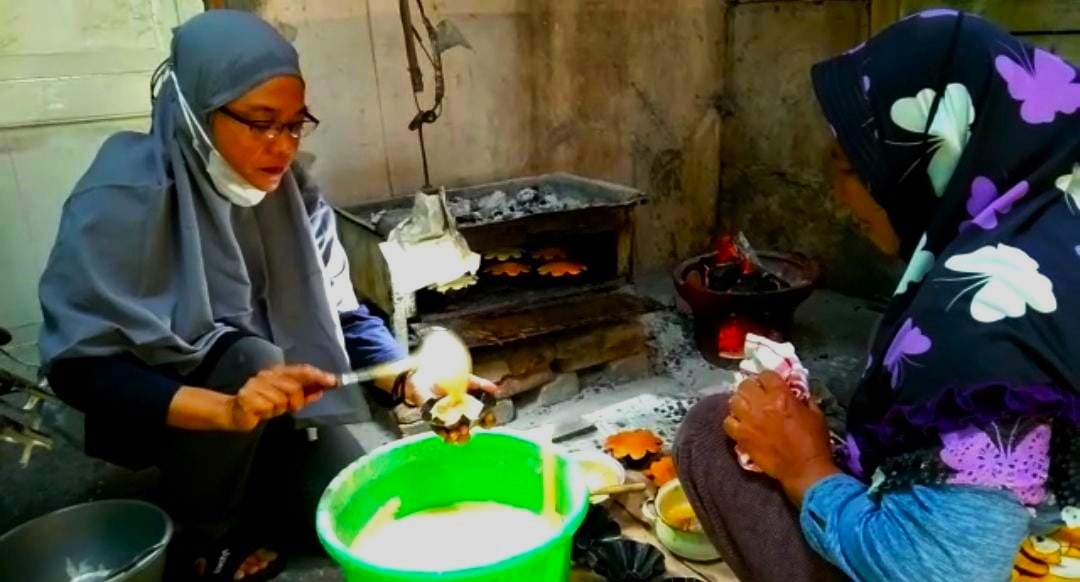
History of Roti Kembang Waru
Roti Kembang waru is believed to be a legacy of the Islamic Mataram Kingdom. Quoting from the Special Region of Yogyakarta Cultural Service page, it is not known exactly who invented the typical Kotagede bread. However, during the Islamic Mataram era, Roti Kembang Waru was always a favorite dish that was present at every celebration or traditional event.
Roti Kembang Waru was made by friends of the palace in ancient times because in Kotagede, there are many Hibiscus tiliaceus. Besides that, the shape of Roti Kembang Waru is easier to imitate when compared to roses or cananga flowers.
Initially, Roti Kembang Waru were only allowed to be consumed by nobles and royal families on certain occasions in the kingdom. But as time goes by, this Roti can be enjoyed by various groups of people.
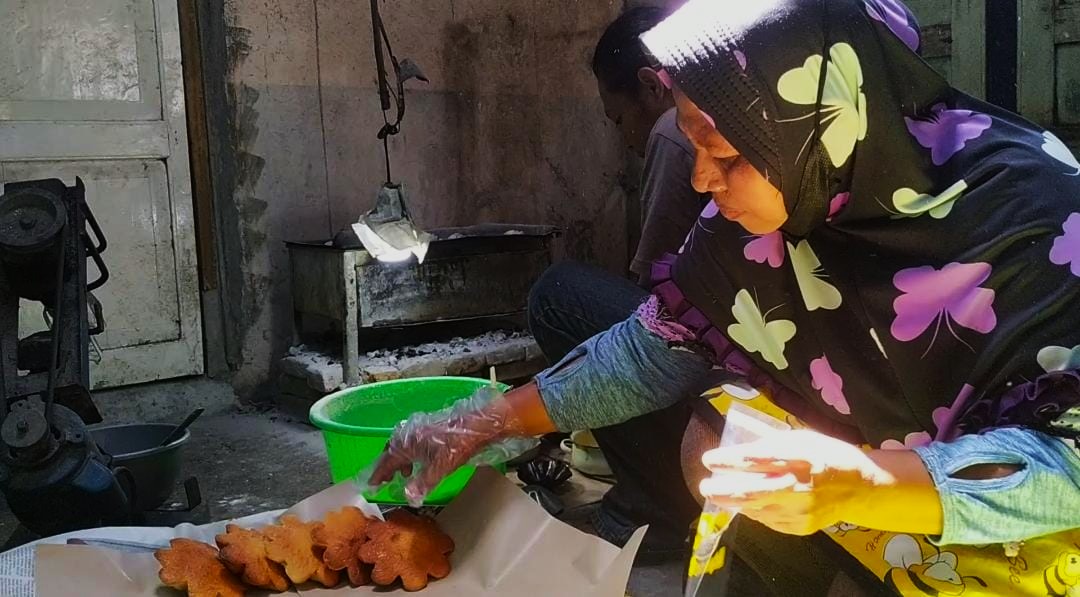
Philosophical Meaning of Roti Kembang Waru
Hibiscus tiliaceus has eight sides. The shape of the flower has the meaning of the eight behaviors of a leader who is the personification of the eight elements of nature, namely earth, water, wind, fire, sun, moon, stars, and sky.
If a leader is able to implement these eight practices, then he will become an authoritative leader and be able to protect all his people. In addition, there is hope for anyone who eats Roti Kembang Watu, where he is expected to always remember the advice of his ancestors so that he can live a life full of appreciation.
Roti kembang waru itself is one of Yogyakarta's traditional cakes that has a unique shape and is full of meaning. The name "kembang waru" comes from its shape, which is similar to the Hibiscus Tiliaceus, a type of flower that grows around the Yogyakarta area. This flower is often considered a symbol of beauty, as well as peace, which is reflected in the shape of the cake, which is beautiful and appetizing.
Roti kembang waru was first known by the community as a dish at certain traditional events or celebrations, such as weddings, circumcisions, or religious events. Over time, this cake began to be produced on a small scale by Kotagede residents, although its authenticity was maintained by the manual and traditional process of making it. Roti kembang waru still exists today, even though now many modern cakes have emerged on the market.
.jpg)
Continuity of Tradition amid Modernity
Ibu Galih makes Roti kembang waru cakes as an economic venture but also as a form of cultural preservation. In the midst of rapid technological developments and modernity, the making of Roti Kembang Waru is still maintained using manual methods that have existed since ancient times. For her, the authenticity of the taste and the traditional manufacturing process are values that must be maintained.
"For me, making Roti Kembang Waru is not only about taste but also about preserving culture. We want Roti Kembang Waru cake to be known not only by the people of Kotagede but also by the younger generation who may not know about this traditional cake," said Ibu Galih enthusiastically.
Even though many modern cakes have appeared on the market, Ibu Galih remains loyal to her traditional methods. Every Roti Kembang Waru she makes contains a story and heritage that must be passed on to the next generation. Patiently, Ibu Galih guides young people who are interested in learning to make Roti Kembang Waru so this tradition does not die out.
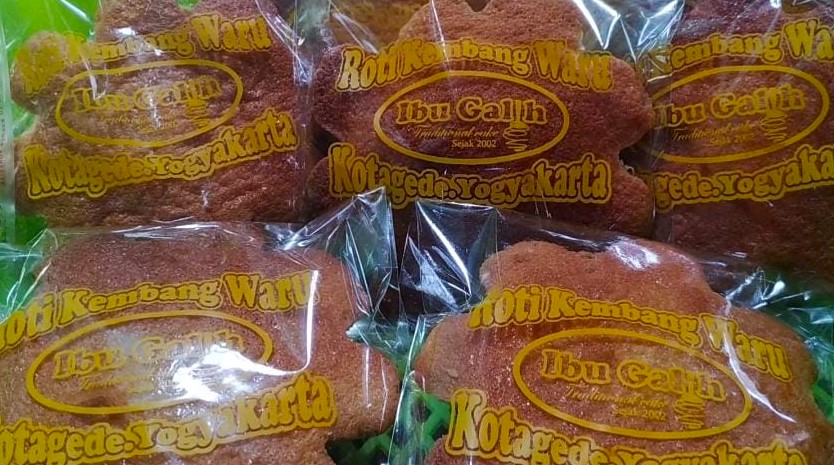
Roti Kembang Waru, Symbol of the Strength of Tradition
For many people, Roti Kembang Waru is more than just food. This cake symbolizes the strength of tradition, which can survive in changing times. Through Roti Kembang Waru, Ibu Galih and other Kotagede residents teach us all the importance of preserving cultural heritage, even though the world continues to change.
Amidst the hustle and bustle of modern life, in a small corner of Kotagede, Roti Kembang Waru remains present as a sign that even though much has changed, beautiful traditions will always be able to find a way to continue to exist.
